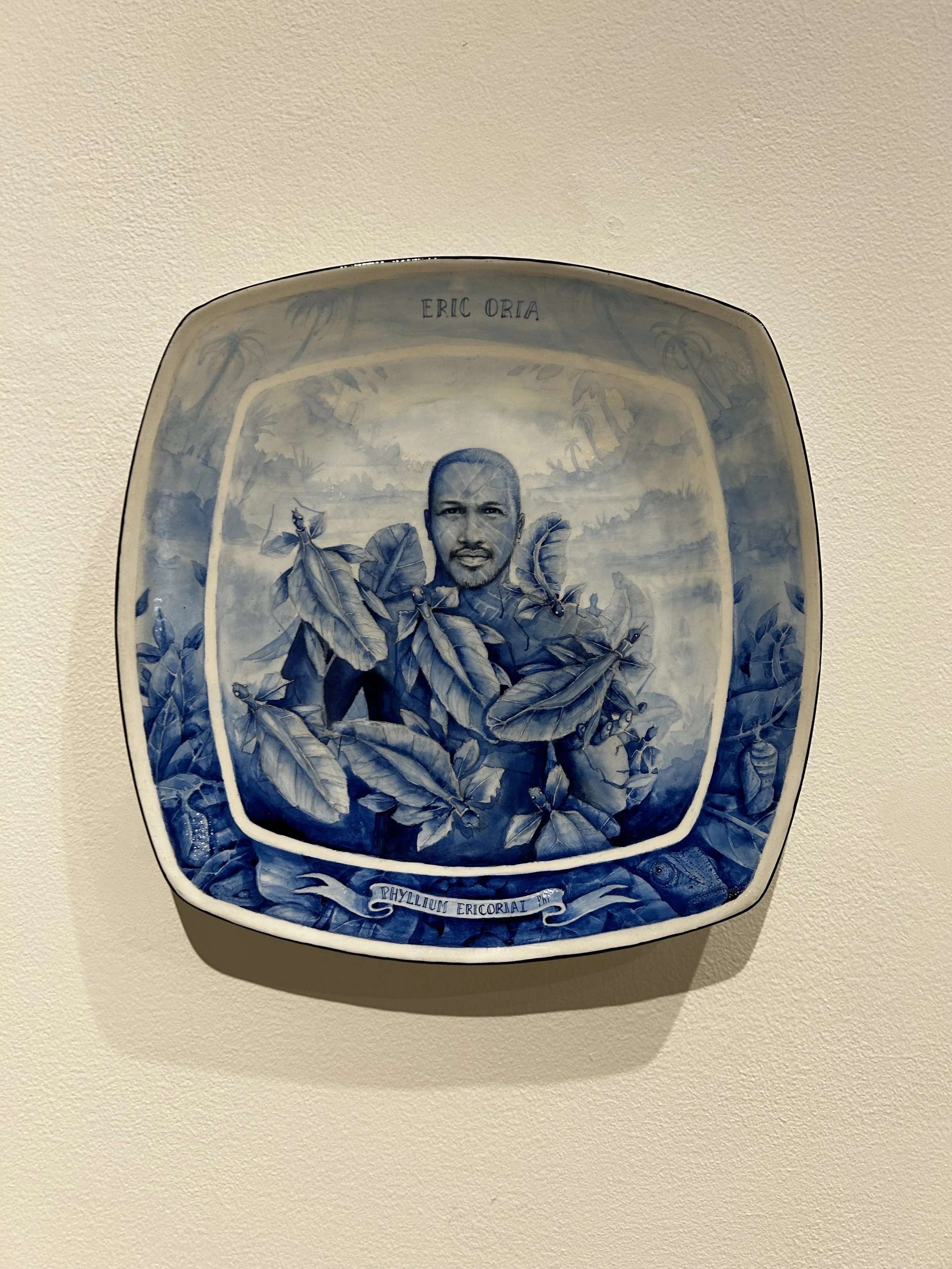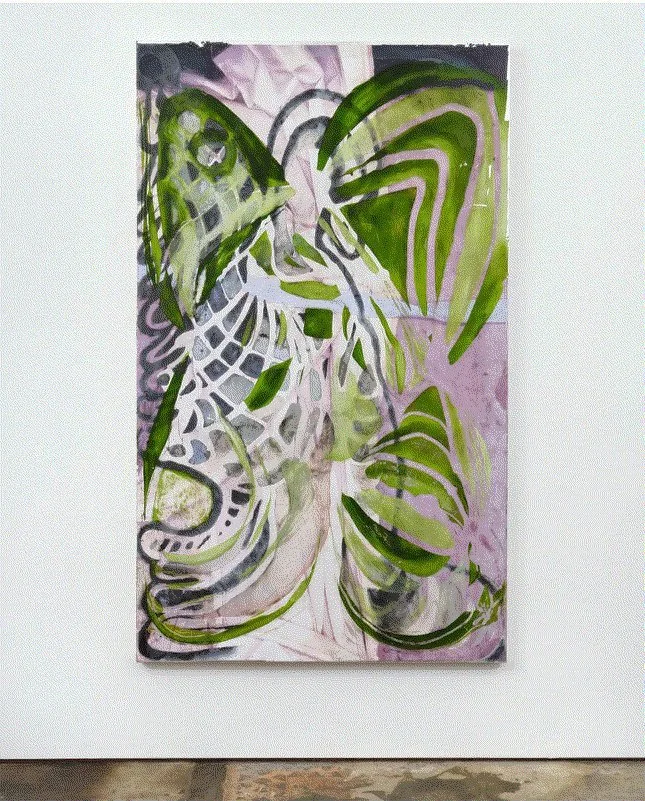SF Art Events: Week of 07.27.25
THING ONE: Gil Batle: Almost Sanctuary
Drawing by Gil Batle
Gil Batle’s Almost Sanctuary is the artist’s debut exhibition in the gallery’s main space, following several presentations in EXiT, the gallery’s art book store. Born in 1962 in San Francisco to Filipino parents, Batle spent 20 years in and out of five different California prisons for fraud and forgery. He now lives on a small island in the Philippines. Batle’s self-taught drawing ability evolved behind bars into sophisticated and clandestine tattooing skills that protected him from murderous gang violence in prisons such as San Quentin, Chuckawalla, and Jamestown—the “Gladiator School” as it’s known to the unfortunate cognoscenti. In racially segregated cell blocks, where Bloods, Crips, and Aryan Brotherhood gang members rule with intimidation and threat, Batle’s facility for drawing was considered magic by the murderers, drug dealers, and armed robbers whose stories he now recounts in minutely carved detail on fragile ostrich eggshells, clay, and paper.
Batle writes, “My carved ostrich eggs depict surreal visions of memories from my struggles with incarceration and/or my struggle for freedom. There are many symbols of shanks, chains, barbed wire, locks, birds, and inmates linked together in chains surrounding panels of dreams, events I recall, or the inmates I’ve known.”
“I actually have to go back (mentally) to prison to capture that feel of being inside that place,” the artist states. “It’s a relief of gratitude when I look up from the egg and I’m reminded that I’m not in there anymore.” While articles about prison abuse appear weekly in the press, they are mere snapshots of the hard truth chronicled in Batle’s artwork. The violent men he knew, the sad mistakes that sometimes led to the incarceration of regular guys, the terrifying events he witnessed, and the bonds formed under the worst conditions all appear with precise detail within his artwork.
Batle’s exhibition also features hand-painted blue and white plates and glass trophies. Batle remarks that he noticed a Japanese Blue Willow porcelain plate in a small antique shop that depicted an old monk fishing by a river, encircled by fish scales on the rim. Batle recalls that the monk caught a fish on his line, and that the fish bore a startling resemblance to a prison shank. Batle writes, “I wanted to make a plate like this but didn’t know about the process of firing glazed ceramics. Nevertheless, I was obsessed with the idea of making a plate. I decided to render one in blue acrylic paint on an existing white ceramic plate; pretty soon, I began creating scenes that reflected on my incarceration and my struggle with freedom on the island where I now live. The compositions incorporate local island animals, oceans, jungles fused with characters of my past.”
Batle’s glass trophies, made of reassembled shattered whiskey bottles, reflect on Batle’s struggles with addiction. Batle writes that “during this struggle, there were times I would smash my whiskey bottle in a drunken stupor in anger and sadness. These glass trophies evolved from my struggles with addiction to my overcoming of it, the smashed whiskey bottles reimagined as victorious forms.” The glass trophies are also etched with similar scenes, figures, and images as those depicted in Batle’s ostrich eggs and hand-painted plates, and there’s a similar tension between the delicate forms of these sculptures and these resilient substrates – egg, ceramic, glass – that bear these stories. Across the three bodies of work, Batle powerful transforms these difficult experiences into a celebration of survival and creative process.
LOCATION: Catherine Clark Gallery, 248 Utah Street, San Francisco, CA (map)
HOURS: Tuesday – Saturday | 11:00AM – 6:00PM | Sunday – Monday | closed
Marion Coleman, Reunion: We Shall Always Remember, 2015, Textile and Mixed Media
Thing Two: Black Spaces: Reclaim & Remain
July 18, 2025—Sunday, March 1, 2026
Free Admission on First Sunday, August 3rd
Black Spaces: Reclaim & Remain navigates the braided histories of displacement, resistance, and resilience within Black American communities in Oakland and the East Bay. Through new commissions in art, architecture, and archival research, the exhibition traces how these communities have creatively resisted dispossession and reimagined spaces of home and belonging.
Drawing inspiration from the legacies of West Oakland and Russell City, Black Spaces: Reclaim & Remain pulls from both OMCA’s permanent collection and loans from local repositories to trace the rise of these communities and their subsequent displacement. In response to this history, the exhibition presents three unique perspectives from an artist, Adrian Burrell; an architect, June Grant with blinkLAB architecture; and an archive, the Archive of Urban Futures and Moms 4 Housing. These installations reflect the ongoing struggle and success in reclaiming and reshaping self-determined spaces in the face of systemic violence, erasure, and urban renewal.
Developed in collaboration with East Bay residents affected by displacement, Black Spaces: Reclaim & Remain invites reflection on the intersection of activism, memory, and the materiality of home. It is a meditation on how Black American communities, in spite of ongoing systemic oppression, conjure wells of creativity and resistance that carve out places to hold their histories and futures
LOCATION: Oakland Museum of Contemporary Art, 1000 Oak Street, Oakland, CA 94607 (map)
HOURS: Wed-Sun 11 am–5 pm, Open late Fri (April–October) 5 PM-9 PM, Mon-Tues CLOSED
THINGS THREE: A Petal’s Edge
August 2 – Sept. 13, 2025
Curated by Janie Perez-Radler
Opening Reception: August 2, 5-8 pm
Casemore Gallery is pleased to present A Petal’s Edge, an exhibition featuring six emerging artists, Cole Barash, Luz Carabaño, Sophronia Cook, Dylan Hausthor, Cecilia Mignon, and Chanell Stone, whose work collectively traces and reinterprets the historical function of photography in conversation with sculpture, printmaking, and painting.
Originally a tool for documentation and depiction, photography has increasingly become a site of hybridized exploration and play. These experimental displays incorporate traditional photographic elements while delving into the subconscious, celebrating the obvious, and engaging with the artists’ deeply personal narratives often tied to the natural world.
Conventional expectations of photographic representation are disrupted, prompting the viewer to consider the tactile and dynamic quality of the work with equal reverence as its conceptual content.
“The rose is obsolete
but each petal ends in
an edge, the double facet
cementing the grooved
columns of air--The edge
cuts without cutting
meets--nothing--renews|
itself in metal or porcelain–
(excerpt of “The Rose is Obsolete” by William Carolos Williams, 1923)
LOCATION: Casemore Gallery, 1275 Minnesota Street, #102, San Francisco, CA (map)
HOURS: Tues - Saturday 11am - 5pm



